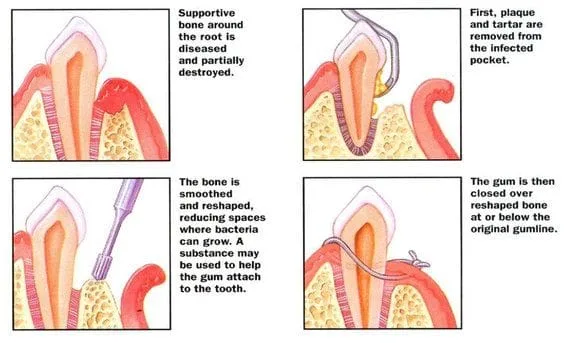Osseous Surgery
Sometimes the effects of periodontal disease create permanent changes in the
tooth and gum structure that will cause issues in the future. Enlarged gum
pockets between the tooth and the gum line are common after having advanced
gum disease. Sometimes these gaps are cosmetic in nature and affect the
appearance of the gums. More commonly, the gaps put the teeth at future risk
for tooth and gum disease, as they are just one more place that plaque and
bacteria can collect. Pocket reduction surgery is designed to thwart the
after effects of periodontal disease and restore your mouth to a healthy
state.
The goal of periodontal surgery is to gain access to the tooth's root and to
clean the damaged areas. Once the dentist can visually see the damage, it
can be removed completely. Removing the plaque and decayed gum tissue leaves
a pocket between the gum and the tooth. Sometimes the gum returns to its
original position, but the pocket is still present. The pocket requires
more frequent cleanings as the patient is unable to get to the pockets with
regular brushing and flossing. Once the swelling from the periodontal
treatment has subsided, the dentist may need to suture the gum to where the
bone has resorbed. The goal is to create a space large enough so it can be
reached through daily oral hygiene, but small enough that it is not a
breeding ground for plaque and bacteria.
